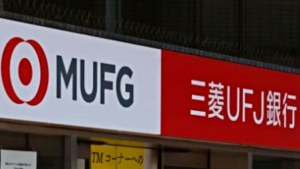Japan’s MUFG Bank focuses on business transformation through optimal use of digital technology:

MUFG Bank, Japan’s largest bank and the 4th largest in the world, has always been in the forefront in using technology to spur customer response and ultimate customer experience. The bank, short form for Kabushiki Gaisha Mitsubishi Yū-efu-jē Ginkō, is part of the Mitsubishi UFJ Financial Group, one of the world’s largest and most diversified financial groups, with presence across 20 markets in Asia and strategic partnerships with some of the region’s biggest banks. It came into being in 2006 with the merger of the Bank of Tokyo-Mitsubishi and UFJ Bank, is a mega bank in Japan along with SMBC and Mizuho and a systemically important bank determined by the Financial Stability Board.
The bank began its transformation journey in 2018 with IBM as partner, mainly aiming to automate processes and increase staff productivity across its operational realms. It called the journey a ‘Re-Imagining Strategy’ and the main aim was to undertake business transformation through the use of digital technology. The model it adopted had a focus on digitization and delivering optimal solutions to customers. It adopted technologies like Blockchain, Internet of Things (IoT) and Robotic Process Automation, and streamlined and automated day-to-day operations.
TACKLING SOCIETAL ISSUES
In 3 years, the transformation brought about an environment capable of achieving sustainable growth by efficiently adapting to structural changes in operating environments. It chose an integrated group-based management approach that is simple, speedy and transparent, delivering the best value to its customers, employees, shareholders and all other stakeholders. One significant factors of the Reimagining Strategy was the idea of providing solutions for societal issues through business activities, thereby ensuring a better society.
The bank has developed a robust framework for driving the reforms and rechristened its Digital Innovation Division as Digital Transformation Division. It also allocated very substantial resources for the Division.
The transformation is now being taken to its next stage where the bank has redefined its goal as ‘empowering a brighter future’. This will involve leveraging the bank’s financial and digital strengths to help its stakeholders around the world. In this, the bank has invented what it calls the MUFG Way, which comprises a newly defined purpose, new values and a new vision.
DIGITIZING DOCUMENTS
While strengthening its technology infrastructure, the bank has recently implemented a service based on robotics and AI technology, developed by a US startup, Ripcord, aiming at digitizing paper documents, especially the Japanese system of ‘hanko’ (or carved name seals) forms. The main intention is to improve customers’ convenience and business process efficiency by performing high-speed and high-accuracy digitization of paper documents, establishing location-free operational environments not restricted by place.
The bank stores over 300 million pages of hanko forms (including related documents) in warehouses and to confirm individual hankos, staff must use special terminals in limited locations which only contain certain information. Depending on the transaction, this creates inefficiencies, including making customers wait.
By introducing the new system, which is essentially digitizing the hanko forms, the bank intends to achieve a location-free operational environment. The technology that will be used is a combination of robotics, software and AI technology. The new system will allow the bank staff to check digitized images of all hanko forms and related documents from their own work terminals, providing instant access to customer information
It is estimated that a team of 4 workers would take 510 years to scan 300 million pages, while the machines operated by 30 people can do that job in about 5 days, claims the bank.
JV WITH ISRAELI FIRM
The bank has recently entered into a joint venture with an Israeli firm, Liquidity Capital, to help it analyze Asian startups and decide on their creditworthiness. The solution that is being developed is based on AI. The $80 million JV, Mars Growth Capital, is based in Singapore. It will mainly target health care, education and e-commerce startups. It uses a unique credit scoring model based on AI technology and real-time financial and accounting data from client bank accounts, accounting systems and CRM information captured through its API technology to forecast future earnings and cash flow.
MUFG Bank has actually started utilizing cloud services, mainly in the field of ASP and SaaS, in late 2000s. It started a study for building a common system infrastructure in the group and built an infrastructure by using a cloud services provider. However, it later opted for Microsoft Azure and initially converted its risk management system into a cloud-based one. It is now working on reinforcing the security of its system infrastructure and also examining the scope of use of Azure in becoming the common system infrastructure of the bank.
It is actually planning migration to the cloud of more than 1000 systems in its entire group. Its ultimate plan is to gain an understanding of the utilization and operation of cloud services including Azure, and working on creating an IT foundation that enables flexible and speedy response to the changing requirements of the financial market.







